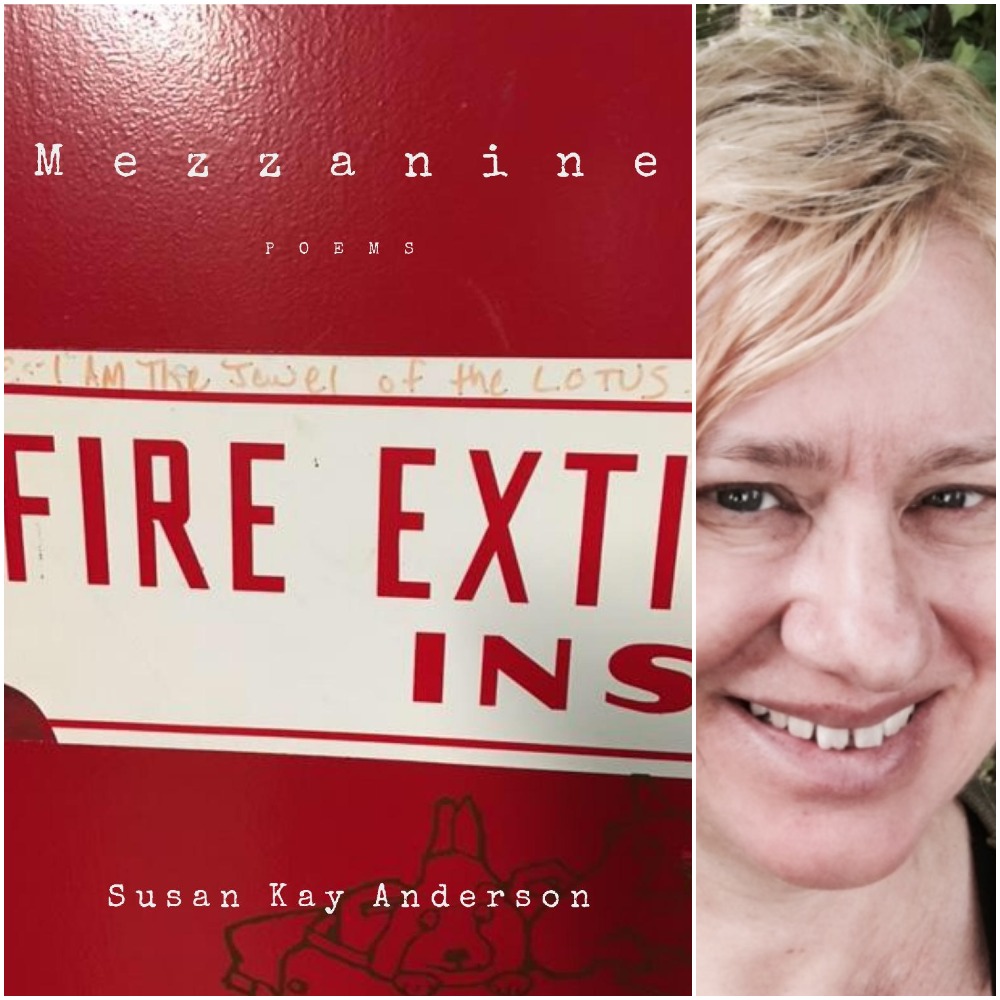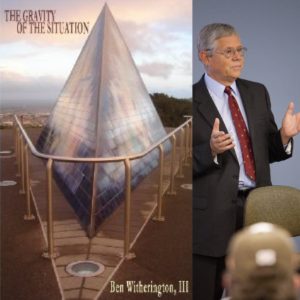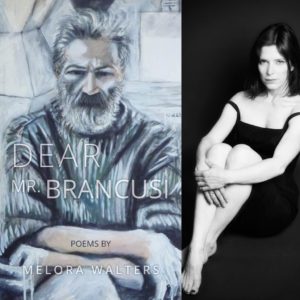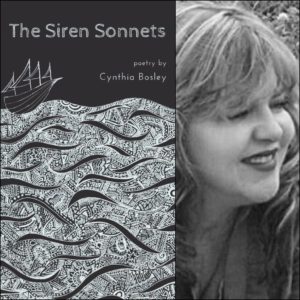Mezzanine is part animal dream, part love song / song of despair about the worlds that drift through the night janitor’s empire, and part eternal desire to make meaning of the illogical evidence before us. The glittering poems by Susan Kay Anderson speak their own realities, talk amongst each other, and shape a world informed by the refusal to look away, desire for connection, and absolute attention to the details. It’s this world of matter, how it drifts in and out of other matter, all of it stories and important, that informs this exciting work.
–Jennifer Boyden, author of The Mouths of Grazing Things
Mezzanine seems an especially apt title for Susan Kay Anderson‘s stunning debut collection. A “mezzanine,” after all, is a story between stories, and throughout these pieces, which interweave narratives of people and places in the West, Anderson gives us ample space from which to look out, look up, and examine our own deepest selves. “My mind is a butterfly,” she writes early in the book, and what a thrill it is to soar with her as she lights on each image and scene, offering up a meticulously observed collection of uncommon depth and heart.
–James Crews, author of Telling My Father and The Book of What Stays
Susan Kay Anderson‘s Mezzanine is a search for self by losing self. As a shamanic presence, she disappears into a number of landscapes, principally the area in and around Nome, Alaska. There is an amazing tension created by the quiet ecstasy of the voice that guides us through this life-dream. The long poem that provides the book’s title is narrated by a night shift janitor who works in a university building. As she moves from room to room, area to area, she recovers pieces of her life, as if praying the stations of the cross. This brilliant book is both stylistically innovative and an emotionally moving experience.
–Lawrence R. Smith, author of The Plain Talk of the Dead, Editor and Publisher of Calibanonline
Compact poems that continually delight and surprise, the poet’s mind-scape conjures interlocking images through word play and rhythm that yield new meaning with each reading – taking the reader along with her ‘so close to the sky’.
–Jonathan Chant, author of The Great Quest Of Celtic Mystery






Susan Kay Anderson (verified owner) –
From Basalt Magazine:
Re-visiting the West: Susan Kay Anderson’s “Mezzanine”
Finishing Line Press, $19.99
reviewed by Cameron Scott
Susan Kay Anderson’s “Mezzanine” is one of the best collections of poems I’ve read this year. Maybe it is because I am partial to the West. As in the dusty, isolated, windy, vast open spaces tucked away from urban centers, trashed-out, stuck in its solitude but still striving to be something dashing instead of dashed. That West. Anderson opens the collection with the following couplet “Where is my West?/ How do I find it?”
For anyone who has grown up in, moved to, or thought about the West, “Mezzanine” attempts to make peace with a West that is often packaged and sold (the dreamer’s west, composed of blue-grass music, pint jars of beer, and escape) with the West we are given: boom and bust, land grabs, dispossession. “Mezzanine,” the plush red-velvety facade, and what appears upon a closer look: a laborer stuck with cleaning the spilled soda, gum, and partially chewed up chunks and discards left on the floor.
At its best, “Mezzanine” views the West through someone else’s eyes and imagination. Anderson presents her readers with a narrator who works “graveyard shift cleaning a building on the university campus… a place to look up, out, and back.” And with that opening, the next paragraph unfolds with a weight and purpose that projects its reader throughout the rest of the book: “The grey cement floors become a shiny cave, my dust mop is a bear’s fur that leaves the place polished with a sheen of Baerenschliffe, bear shimmer that beautifies and brings in more light. My mind is a butterfly.”
Much like the vistas of the West that change with perspective, so too, do Anderson’s poems. These poems come from as much of a bear-like, butterfly-flapping, and bee-ish imagination as they are rooted in the blue-collar world of the mezzanine. “I have myself to the moment,/ I heard what I wanted to hear.” In many of these poems, the narrator is working through that ultimate question: what is the West?
While we may never truly answer that question, by the end of this collection, the reader is left with a transformation: a narrator transformed. At its core, “Mezzanine” is a collection of poems about how sometimes what we need isn’t what we think we need. About what we find through imagination as we examine the past. Anderson writes “I thought this was the West/ I have escaped to somewhere else.” And lucky us, we get to escape with her.
Susan Kay Anderson (verified owner) –
From Neon Books:
Neon Books reviews the poetry collection Mezzanine by Susan Kay Anderson, published by Finishing Line Press
Review: Mezzanine by Susan Kay Anderson
27th January 2021 Neon BooksReviews
Author: Susan Kay Anderson | Publisher: Finishing Line Press | Buy: Amazon | More: Goodreads
A mezzanine is an intermediate floor in a building, usually situated between two floors, or as part of a free-standing structure within an open space. It is, thus, an apt title for Susan Kay Anderson’s book of poems, many of which deal with liminal or in-between states of being. There are poems where the narrator speaks from within a diorama, from inside a glassless greenhouse, or from within dreams or imaginary spaces.
Throughout, however, is woven a more literal strand. Among the poems are fragments of prose poetry which tell an ongoing story – one which begins with the testimony of a graveyard shift cleaner wandering a university campus. Their musings on the mezzanine floor in one building form a mission statement, of sorts, for the poetry which follows:
“and you want to go to the mezzanine
first you need to find it
and once you are there
you may not realize
that you have found
a place to look up, out, and back.”
In both the poetry and the prose poetry there’s a sense of quiet dislocation, a longing for a specific place that may or may not exist – be that the unfindable interior of the mezzanine floor, or the more intangible West that the narrator comes to seek. Whatever the focus, these are decidedly melancholy verses – but ones which derive some lightness from the specificity of their descriptions:
“We watched while
a man dived into the clear cold water.
We sat on the piney beach with Mom
in the golden sand. Mom was topless.
We were so embarrassed. Please
put on your top, we said. That man will see.
She lifted her arms above her head and stretched.
European style, she said.”
There are few metaphors or showy turns of phrase here – and those that are included are carefully chosen. Anderson adopts a style that is bright and precise, each line charged with meaning. There’s a sense of dream-like symbolism to almost everything.
The format – poems interleaved with prose poetry – allows the collection to roam far and wide, exploring its themes from multiple angles, while also telling a more cohesive and straightforward story.
Mezzanine represents a powerful collection of robust, compact poetry – tied together with an ongoing narrative. It is a collection that delights in the ordinary, celebrates the lost and the in-between, and manages to render these things in an almost-magical light.
Susan Kay Anderson (verified owner) –
From Sandra S. McRae, author of The Magic Rectangle & all the way to there:
Mezzanine is a quietly powerful collection of important poems about the American West. These stories and questions are written in a woman’s voice, with whispered insights that sometimes tickle the ear like the buzzing of a bee’s fragile wings. Susan Kay Anderson portrays a land still rife with mystery and possibility, despite tragedies and losses. If you are at all familiar with the American West or have wanted to know more about it, climb up to the mezzanine, where the view extends beyond the landscape into the past.
In this collection, everything gleams with the poet’s imagination, like the Baerenschliffe (bear shimmer) she imagines coating the floors she mops in the opening poem “Fire Cipher.” In the title poem, the poet inhabits the space between floors of a university building, between day and night, between the real and the imagined, between the detritus of the work day and the silent majesty of public art. Dreams and memories drift through this space and the reader realizes that this is what we do throughout life, telescoping out of the past to zoom in on the all-too-present. By the end of the title poem, we can agree with the poet that “In the aftermath of nothing, I’ve found a little something.”
The poet’s inner life is rich with voices, memories, insights—from childhood to the present, voices of the dead and missing speak to her. The question that asserts itself throughout the book appears:
“Was it two minutes ago or was it ten years?
Was it half a century ago
or was it last year?”
Bittersweet observations draw us in, as the poet touches on our deepest hidden vulnerabilities: “The leaves look back to their trees wanting more chances.” Who hasn’t felt that? And that desire for redemption comes with a promise we desperately hope is not futile: “…if you/ planted me here/ …/ I’d bear fantastic fruit.”
Some poems start without titles, and some end with a resonant note that hangs in the air. Woven through each are arresting visuals like this one of the moon: “She is astonished. Her bombed face a perpetual O.”
The book’s final poem, “Man’s West Once,” has its own mezzanine built of other authors’ voices. It, too, is “a place to look up, out, and back.” From that space suspended between the poet’s own words, we can see the bottom and top floors, stages for scenes and characters from the poet’s earlier lives in town and villages across the Great West. The book’s real triumph, however, is not its reflective cataloging and assessment of a life spent searching for what was “man’s west once.” It is that a book has been written about the American West from a woman’s perspective, and this one is alive with indigenous voices and native wisdom. That instead of the violent pillaging of a gold rush or a cowboys-and-Indians Hollywood shootout, the landscapes are lovingly preserved, so even delicate butterflies and bees have their say. And the trees and lakeshores, forests and rivers are populated with bears, owls, and wolves. The dangers and mysteries come from these original inhabitants of the west who, under the poet’s watchful eye, get their long overdue homage.